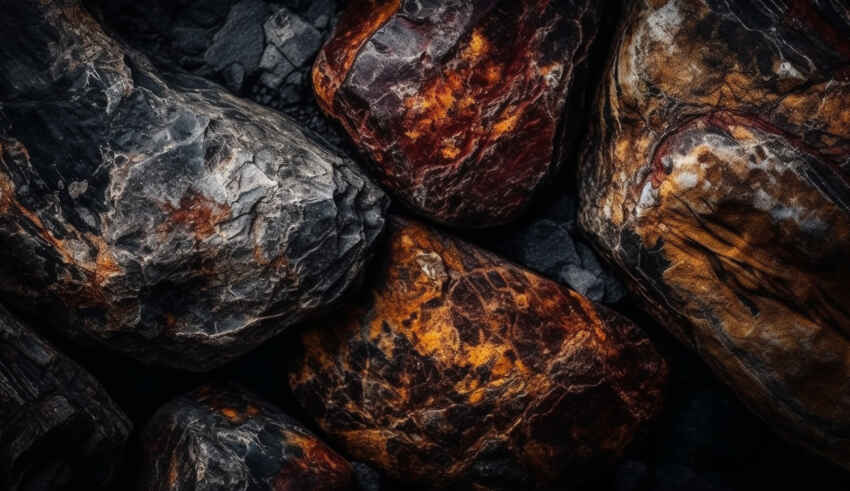
The rare earth minerals are seen as the basic riches of earth’s crust which is defined as an accumulation of peculiar atom attributes. As little as this amount of input is sufficient for generating an electromagnetic energy equal in magnitude to that produced by oil and coal when subjected to industrial processing. Rare earth minerals are at the position of prominence in the contemporary world especially in the areas of global energy and security.
These rare earths minerals are important in smart phones, electric vehicles, wind turbines and missile guidance systems and have placed enormous technology and economic supremacy on one player which is China. However, excessive dependency on Chinese rare earth has recently emerged as weak spot for which supply chain is immediately need be replaced with trade bloc.
Again, it is a race for natural resources this time with an electronical touch.
Due to projected growth in demand for electric vehicles as well as clean energy, rare earths demand could increase by more than 30 times in three decades. These are 17 rare minerals used in manufacturing magnets in wind turbines and motors, strengthening of lanthanum in EV batteries and other advanced industrialization purposes.
China is one of the major producers of the rare earth minerals in the world and it has currently taken over more than 80% of rare earth processing around the world, mainly from inner Mongolia, although there are other untapped reserves everywhere around the globe, as well as new extraction discoveries. Shockingly, China restricted rare earth exports whenever there was a political disagreement as happened temporarily against Japan in 2010 and now to some extent with a hint of threat towards America, thus controlling some major world firms such as Apple, General Electric or Siemens.
Since China has the largest share of rare earth minerals other countries are worried that this monopoly threatens the security and stability of their supply chains in light of the increasing shift toward renewable energy at the global level. Many nations search for alternative sources of the supplies from China. Some strategies seek to increase diversification of mining and exploration projects within the country. Other nations have entered diplomatic negotiations aimed at establishing alliances with richly endowed nations in this regard.
The United States is a major consumer of these resources, and thus the need to build a reliable rare earth minerals’ supply chain exists. Attempts are being made to resuscitate native production and processing capacities while minimizing dependence on Chinese imports. In addition, the United States is conducting diplomatic consultations with its allies to build up cooperation against supply chains’ vulnerabilities.
Breaking of China monopoly with the focus being on Australia since it is the home to massive rare-earth sources. Working together with the USA and other partners in order to enhance the global supply chain and find new suppliers for these important commodities. Some states are trying to make sure that they do not depend on China while others like Democratic Republic of Congo face negative effects of rare earth mineral hunt in the world. In Congo, extraction is normally associated with high levels of pollution as well labour exploitation.
Mineral diplomacy has gained momentum with Australia signing an agreement with India bonding with the Quad partners, since both India and Australia are members of the Quad, Commonwealth, Indian Ocean Rim Association (IORA), ASEAN Regional Forum and Asia Pacific Partnership on Climate and Clean Development.
These rare earth minerals become a strategic priority in diplomacy. Therefore, they are in control of electronic elements of the industry which gives them the control of the heights of influence in the next generation technologies and grids.
This clear-cut contradiction in rare earths for free world culminates in either unrestricted confrontation against monopolization or alliance and ensuing integration. Finding ways through shrinking paths of development requires collective resilience against potential single player ambitions that would monopolize or turn arms in their favour. In consequence, it is no longer possible to secure enrichment of rare earths as a source of international leadership. Instead, such an achievement should be shared within a friendly rather than forced framework of collaboration. The architecture for energy security that is currently being put together will be judged by future generations of statesmanship with respect to today’s diplomacy.
In conclusion, there is increased attention on rare earth minerals as we shift to renewables and electric cars at the global level. Countries are employing different methods such as local production, diversifying suppliers among others, and collaboration with other nations for reducing over-reliance on China. The implication of this scramble indicates that there is a need for collaborative measures coupled with long term solutions towards safe sourcing of these rare earths minerals.
By The European Institute for International Law and International Relations
References
Bradsher, K. (2010, September 23). Amid tension, China blocks vital exports to Japan. The New York Times. https://www.nytimes.com/2010/09/23/business/global/23rare.html
Mitra, A. (2021, August 3). Critical Minerals, strategic ties to take India-Australia Relationship Forward. India Global Business. https://www.indiaglobalbusiness.com/geopolitics/australia/critical-minerals-strategic-ties-to-take-india-australia-relationship-forward















